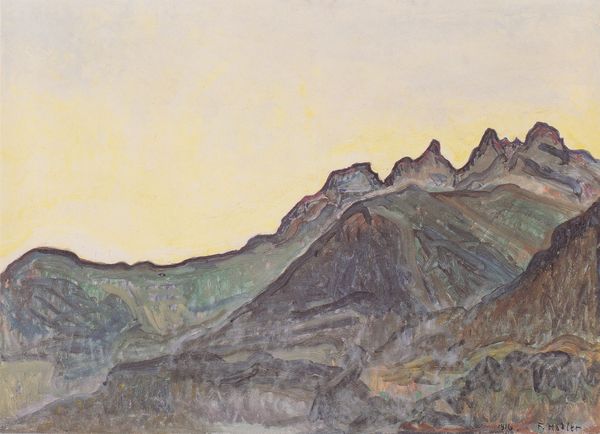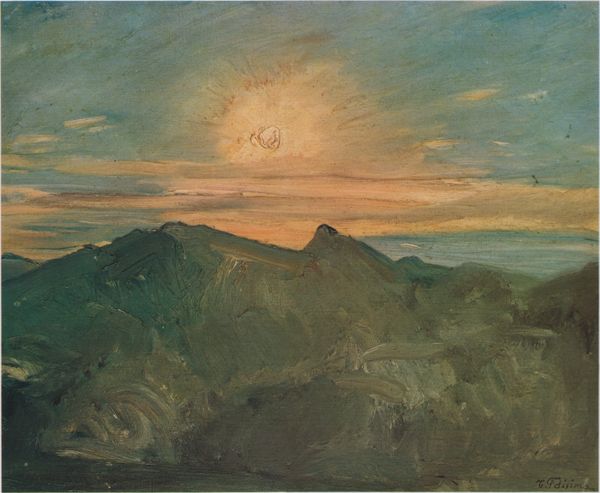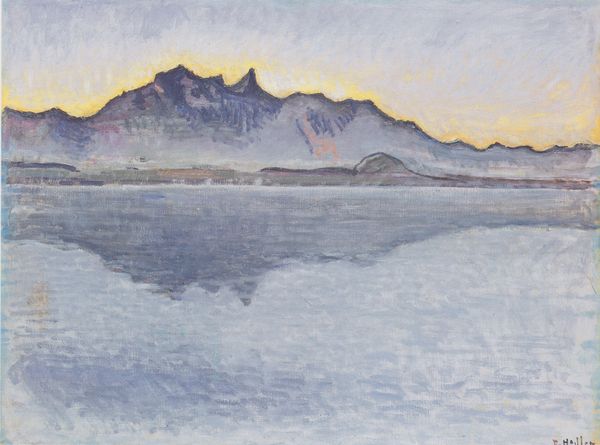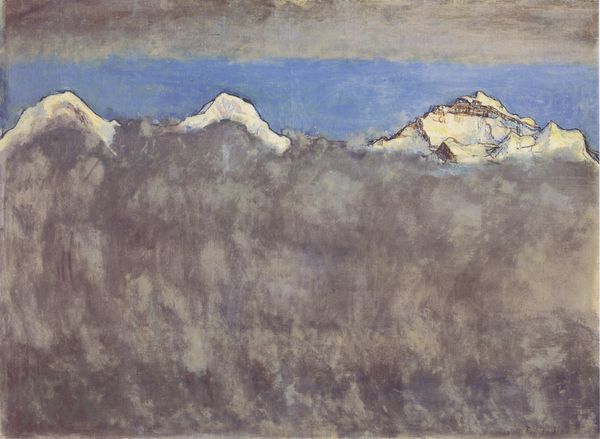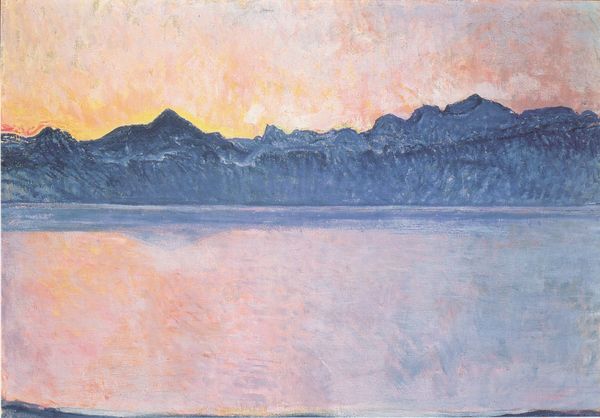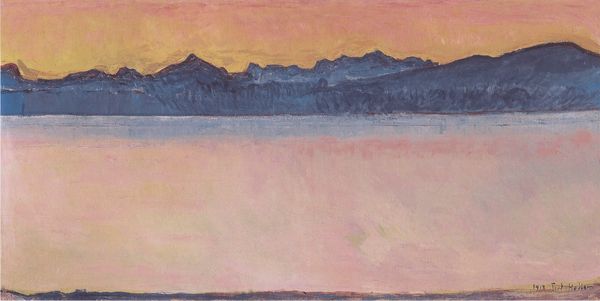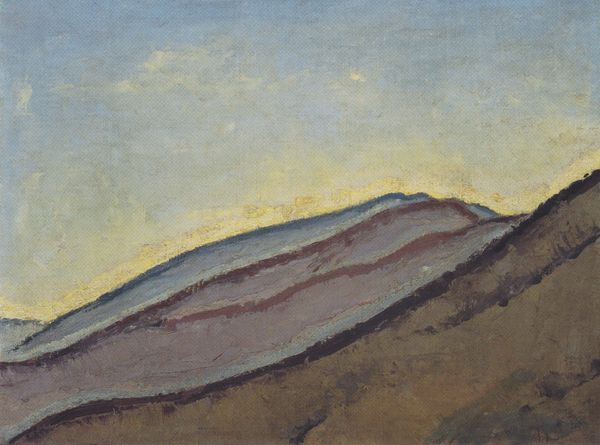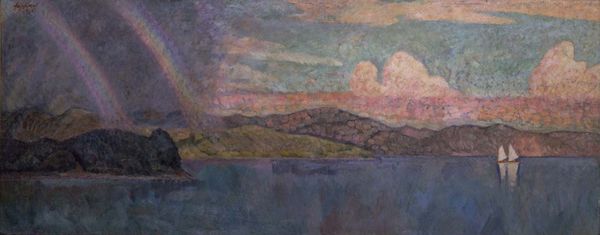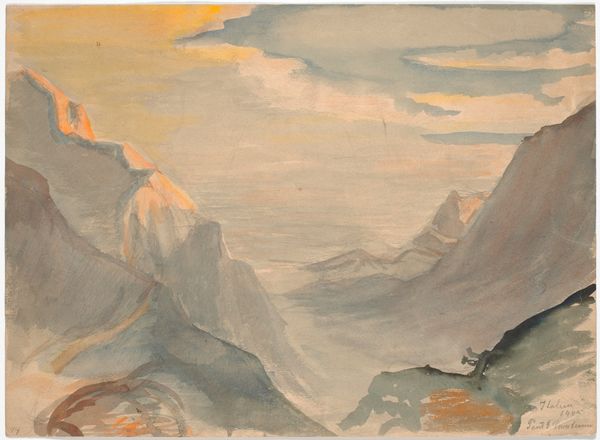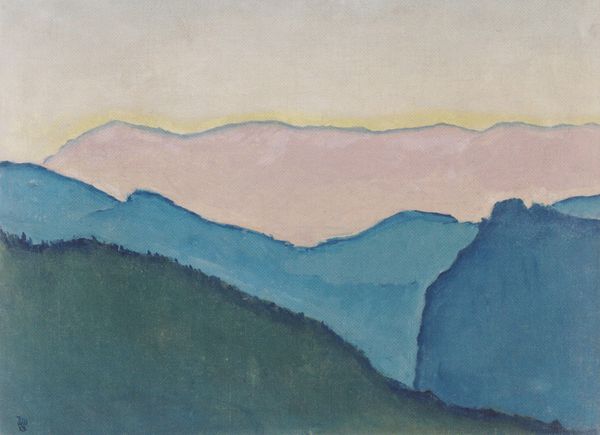
plein-air, oil-paint, impasto
#
plein-air
#
oil-paint
#
landscape
#
oil painting
#
impasto
#
modernism
Copyright: Public domain
Curator: Gazing upon "Niitakayama," a landscape rendered in oils by Fujishima Takeji in 1933, I'm immediately struck by its almost ethereal quality. It’s like a dreamscape of a mountain, not quite anchored to reality. What's your first impression? Editor: Well, my first thought is how grounded it feels, materially. You can see the impasto technique so clearly – that thick application of oil paint, it gives real texture. It reminds me of the physical labor involved in creating such a work, especially *en plein air*. It wasn't just a flight of fancy; it was a process. Curator: Yes, there's that palpable sense of process, but look at that light! The painting practically breathes with it. That amber glow across the sky feels like a fleeting moment, a captured emotion more than just topography. For me, that makes it intensely personal, almost vulnerable. I feel invited into a very intimate viewing experience. Editor: True, the sunset draws your eye. But for me, the real story is the way the paint itself forms the shapes, that the material is the message. These impasto landscapes were a whole phenomenon, reflecting changing technologies and industrial pigments that made painting outdoors a more viable creative and even commercial proposition. Did the title impact how it was marketed? Curator: Possibly. "Niitakayama," of course, references Mount Niitaka, the highest peak in Taiwan, which during the early twentieth century was under Japanese rule. So, there's a layer of colonial history folded in, a bittersweetness, perhaps, in depicting a land both familiar and foreign. How does its history influence your perspective of it? Editor: The historical context underscores my point about materiality. The accessibility of materials influenced whose landscapes could be created. What does it mean to paint *that* landscape, in *that* style, using those industrially produced pigments? Were indigenous Taiwanese artists afforded those materials, that plein air liberty, that ease? Curator: These are profound questions, which bring it back, in a sense, to the landscape—to the mountains. Their silent presence absorbs all our interpretations, all our histories, the personal and the political… Editor: Leaving us, inevitably, in relationship to landscape as a mirror and measure for our lives and work.
Comments
No comments
Be the first to comment and join the conversation on the ultimate creative platform.
